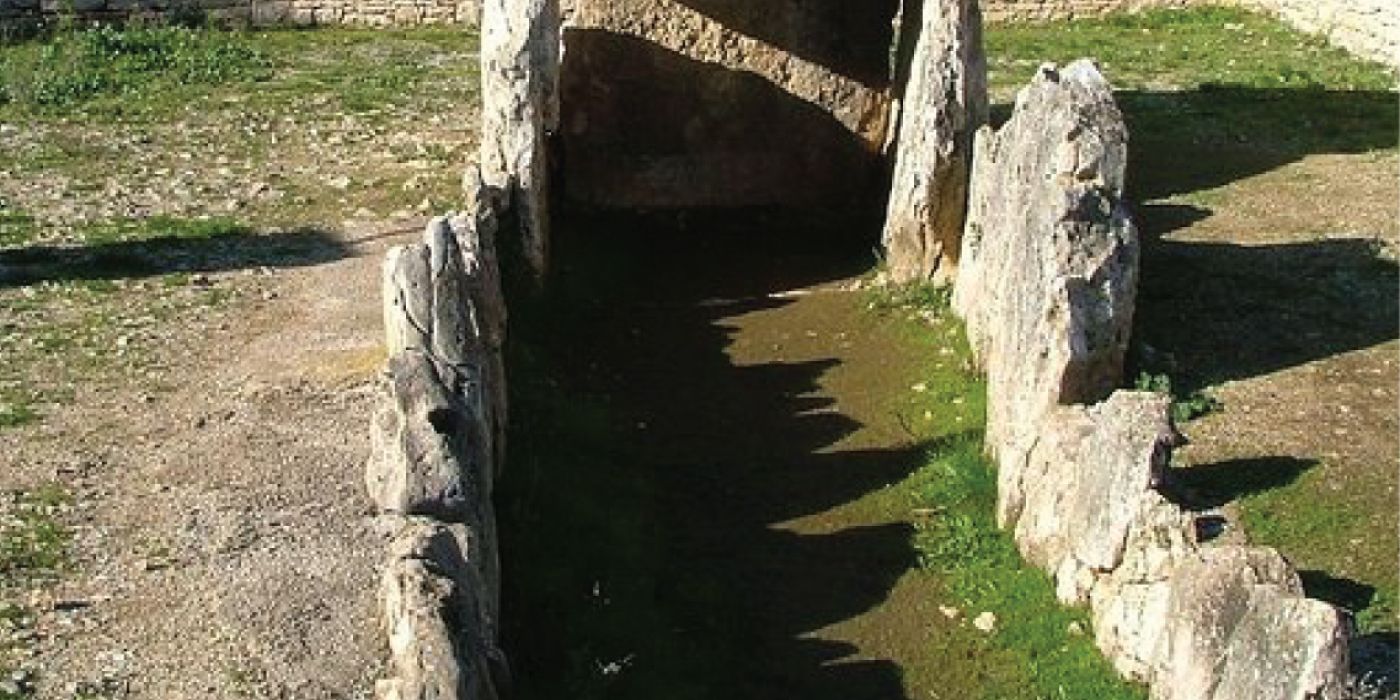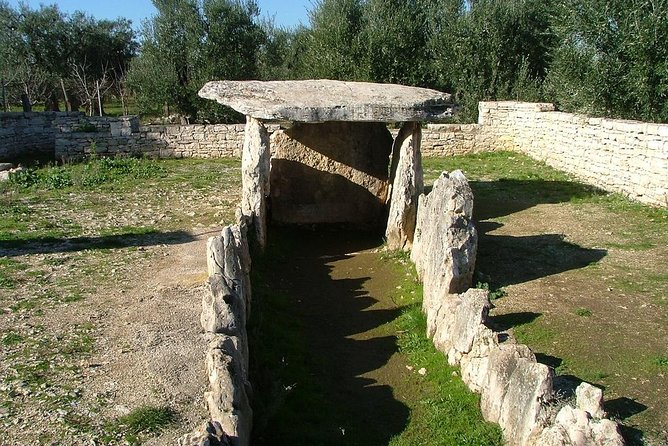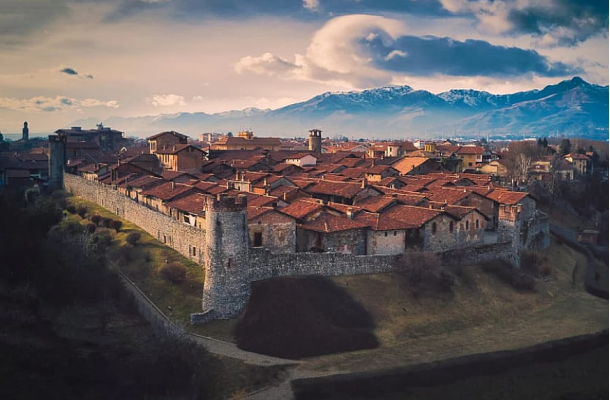

Bisceglie, una pittoresca città situata sulla costa adriatica della Puglia, è famosa non solo per la sua bellezza storica e naturale, ma anche per un’intrigante curiosità legata alla sua storia. Una delle curiosità più affascinanti riguarda il “Dolmen della Chianca”, un antico monumento funerario megalitico risalente al II millennio a.C.

Il Dolmen della Chianca è uno dei meglio conservati in Italia ed è costituito da grandi lastre di pietra disposte verticalmente e orizzontalmente per formare una camera sepolcrale. Questo sito archeologico non solo testimonia l’antichità dell’insediamento umano nella zona, ma è anche un importante punto di riferimento per gli studi sulla preistoria del Mediterraneo. Inoltre, la scoperta del dolmen ha contribuito a rafforzare l’identità culturale di Bisceglie, rendendolo un luogo di grande interesse per i visitatori e gli studiosi di tutto il mondo.
Cos’è un Dolmen?
Un dolmen è un tipo di tomba megalitica, costruita con grandi pietre. Questi monumenti funerari risalgono al periodo neolitico (circa 4000-3000 a.C.) e sono diffusi in diverse parti del mondo, ma sono particolarmente comuni in Europa. I dolmen erano utilizzati come tombe collettive e sono tra le prime strutture architettoniche realizzate dall’uomo.
Il Dolmen della Chianca
Il Dolmen della Chianca prende il nome dalla parola locale “chianca”, che significa “pietra piatta”. Questo dolmen è situato nella campagna di Bisceglie, in provincia di Barletta-Andria-Trani, e risale all’età del Bronzo (circa 2000-1500 a.C.). È uno dei dolmen meglio conservati in Italia.
Caratteristiche del Dolmen della Chianca
- Struttura: È costituito da tre grandi lastre verticali che formano una camera rettangolare. Queste lastre sono sormontate da una grande lastra orizzontale che funge da tetto.
- Dimensioni: La camera sepolcrale è lunga circa 2,10 metri, larga 1,30 metri e alta 1,80 metri.
- Funzione: Era utilizzato come tomba collettiva. All’interno sono stati trovati resti umani e oggetti funerari, come ceramiche e utensili in pietra, che indicano l’uso del dolmen per sepolture rituali.
- Scavi: Il dolmen fu scoperto nel 1909 da un gruppo di archeologi locali. Gli scavi successivi hanno rivelato numerosi reperti che hanno fornito preziose informazioni sulle pratiche funerarie dell’epoca.
Importanza Culturale e Storica
Il Dolmen della Chianca è un sito archeologico di grande importanza per diverse ragioni:
- Archeologia: Offre una finestra unica sulla vita e le pratiche funerarie delle comunità neolitiche della regione.
- Turismo: È un’attrazione turistica importante per Bisceglie, attirando visitatori interessati alla storia e alla preistoria.
- Identità Culturale: Rappresenta un simbolo della ricca eredità culturale della Puglia e dell’Italia meridionale.
Conservazione
Il sito è protetto e curato per preservarne l’integrità e permettere ai visitatori di apprezzare uno dei più antichi monumenti della regione. Iniziative locali e regionali promuovono la conoscenza e la valorizzazione del Dolmen della Chianca, rendendolo un punto di riferimento importante per l’identità culturale di Bisceglie e della Puglia.
Il Dolmen della Chianca è quindi non solo un monumento archeologico, ma anche un importante simbolo storico e culturale che continua a affascinare studiosi e visitatori di tutto il mondo.
Ultimo Aggiornamento:
1 Ottobre 2025
Autore
Categoria Articolo
Ultimi Articoli

Ugento, tra Cronaca e Natura: Il Ritrovamento del Pesce Scorpione che Scuote il Salento

Il Ricetto di Candelo: Quel “Caveau” Medievale che Custodisce l’Anima del Piemonte




